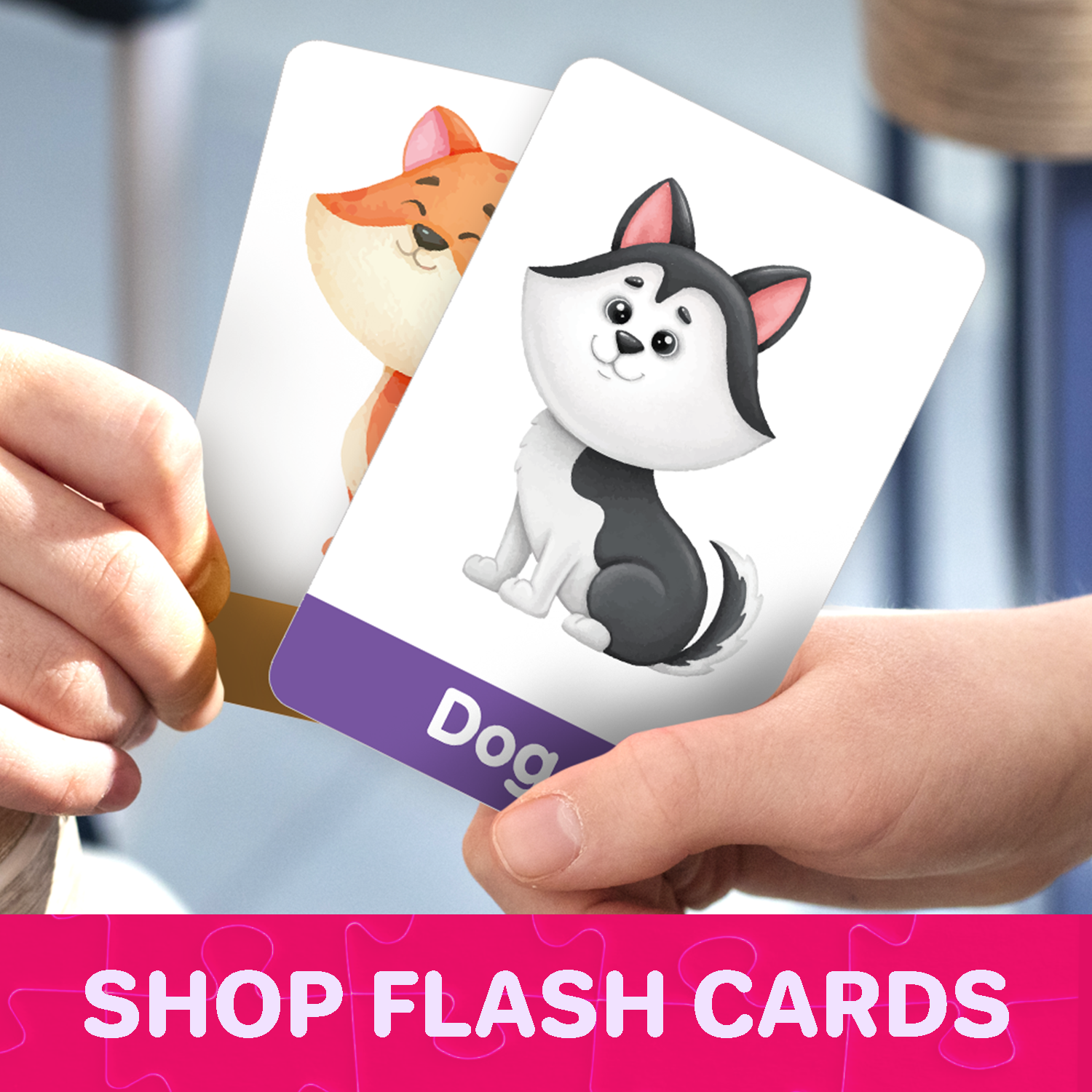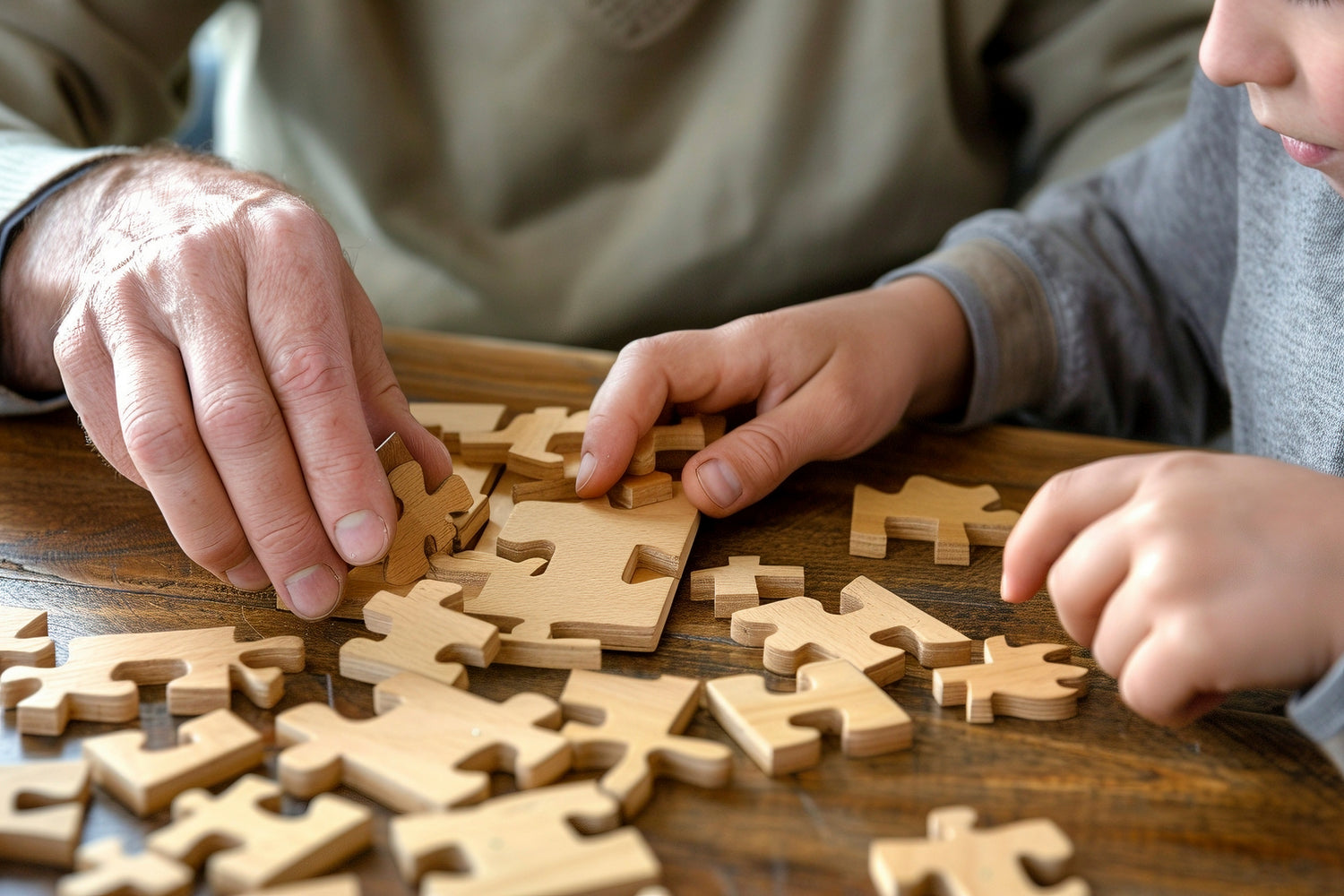Should I order this toy? Will my kids even like it? How do I know what products will help my students the most?
Unfortunately, we all know that feeling of walking down the education or toy aisle at the store, and getting completely overwhelmed with the amount of product choices on the market today. How can educators possibly narrow down what are the best resources for their classrooms?
Well, it starts with the understanding that not all learning products are created equal. If your classroom has a limited budget or shelf space, you only want to teach with the best products.
Luckily, there's one learning tool that has you covered: puzzles.

If you work with kids, you've likely encountered many puzzles in your educational experience. If you look around your classroom right now, you even be able to point one out in your storage closet or on your shelf.
But think honestly about how you've incorporated those puzzles into your classroom: are they gathering dust on your shelf because your students don't know about them?
Maybe you're just now realizing that puzzles should be offered to your students as intentional learning tools, but you're just not sure what the benefits of using them in that way are.
Are you ready to learn more about the benefits of puzzles and how to use them successfully in your classroom? Read below and see if a puzzle is the perfect missing piece for your learning environment!
6 Benefits of Puzzles for Kids
1. Enhance Fine Motor Skills
If you teach preschoolers, you know that developing their motor skills is a large part of their learning milestones. You've most likely witnessed a toddler trying to lace a string into a hole or shove a building block into a box, perhaps wildly swinging their arms or not having the precision to pull these actions off.
Toddlers need fine motor skills to control their hands when moving objects from one place to another. Older preschoolers need grip strength to open scissors and squeeze them shut when cutting. Then, as they progress in age, older students need to be able to hold a pencil and write legibly.
By manipulating small items like puzzle pieces, your students are getting a chance to work on their grip strength and dexterity. These are the same muscles needed for writing, cutting, coloring, gluing, and other types of desk work that they'll encounter as they progress through future grades in school.
2. Boost Cognitive Development and Problem-Solving Skills
As educators, we are often looking for ways to step away from the paper and pencil at the desk and toward activities that apply the learning objectives in creative and engaging ways.
Maybe you're teaching shapes in your classroom. You've spent the week showing examples of shapes in books you're reading aloud to the class during circle time and maybe you've drawn shapes on the chalkboard. But now, you'd love to see whether your students can recognize the outlines of the different shapes you've taught.
Tip: Use a shape puzzle for formative feedback on your students' understanding!
Solving a puzzle challenges your students to recognize patterns; the colors and shapes of each puzzle piece must connect into a final composed picture. That's no easy task!
3. Improve Social and Emotional Development
As a teacher, you can easily introduce puzzles in the classroom as part of teamwork activities.
Suppose you present a lesson in which students in groups must solve a complex puzzle with many pieces. In that case, your students must collaborate by splitting up the work and sharing ideas to complete their goal of finishing the puzzle.
This type of cultivated group interaction encourages cooperation and communication, which are essential skills for social development, no matter what age students you teach. For example, you can have groups of preschoolers complete a floor puzzle of 50 pieces, or groups of middle school students complete jigsaw puzzles of over 100 pieces.
After completing a puzzle, the culminating picture at the end is one of the significant visual benefits of puzzles. When students accomplish goals, especially ones that visually represent their hard work, they experience the payout of patience and perseverance. Just think about the cheers after the satisfying click of the last puzzle piece being pushed into place.
4. Encourage Language Development and Communication Skills
When children work on puzzles, particularly in groups or with adult supervision, the opportunity to describe the shapes, colors, or themes begins to surface while they are building the puzzle.
It's easy to encourage students to speak about what they see on the puzzle pieces. For example, you might ask your students, "Does this look like the same shade of pink in the corner? Oh no, it seems like we need a lighter shade of pink here; can you find one?" or "What picture do you think we will create when we are done with this puzzle? Let's give each other three guesses!"
This leading conversation naturally leads to discerning the puzzle's theme, which can be a great introduction or review of whatever content you are teaching. If the puzzle has animals in the picture, you can direct the conversation to describe animal habitats or maybe even delve into the characteristics of different ecosystems, which, incidentally, might happen to be your current science unit.
Think about the abundance of creative possibilities here: puzzles with themes like unicorns, princesses, and dragons can lead to imaginative and creative storytelling sessions. You'll be amazed as children expand their vocabulary and develop a more robust understanding of language simply by describing the puzzle and letting their minds go wild.
5. Build Memory Skills and Spatial Awareness
Imagine you offer a horse puzzle to a student in your classroom. For that student to be developmentally ready to assemble pieces of a horse puzzle, they must first be able to visualize what a horse looks like from their own memory. Even if the puzzle box showcases the final picture of the finished horse, your student will still need to understand a horse's physical shape before applying that knowledge to this activity.
Taking it a developmental step further, they must then be able to decipher how the pieces connect physically. Students will need to account for corner versus flush-edge pieces and decipher how the inner pieces might have different-sized slots. This skill requires spatial awareness.
Working on this horse puzzle challenges this student to visualize how the pieces will fit together while working abstractly or zoomed-in. This spatial awareness will later translate into geometric math and physics aptitudes.
6. Support Developmentally Appropriate Learning
If you've worked with kids for any length of time, then you know learning content must be age-appropriate for a child's developmental level. If the content is too easy, students get bored, but if it is too hard, students get frustrated.
Puzzles, by design, are aligned with the fine motor and cognitive skills typical of children at each stage of learning. As mentioned, peg and chunky wooden puzzles are perfect for the youngest students working on their fine motor skills. Large floor puzzles work well in a preschool setting, allowing kids to move freely on the floor while handling larger pieces, making them easier to manipulate. A complex table jigsaw puzzle is an excellent choice for older students who have the body control and disciple to stay at their assigned desk and handle smaller items.
Ready to Find the Perfect Puzzle for Your Classroom?
If you are convinced that puzzles are the perfect learning tool for your classroom, then the next battle is finding quality puzzles that won't break your teaching budget.
Quokka products are the perfect answer for your classroom needs: parents love that Quokka meets rigorous safety certifications, and teachers on a tight budget appreciate that Quokka commits to using renewable and eco-friendly materials.
- For early toddlers ready for their first puzzle, try the 6 Chunky Puzzles for Toddlers Unique Shapes.
- Do you have a preschool classroom full of curious and active students? Try the Wooden Toddler Puzzles | Realistic Animals.
- For realistic representations of nature and wildlife, try the Wooden Puzzles Set for Toddlers | Mushrooms Flowers or the Wooden Real Puzzles for Toddlers | Insects, Arctic Animals.
- Are you an educator for an older child and want to unleash their imagination while teaching geography simultaneously? Then the 70 Piece Jigsaw Puzzles 50 Cards For Kids | World is right up your alley!
With its commitment to durable and sustainable designs, Quokka shines as the leading producer of quality puzzles and organic, modern educational toys. Are you ready to fill your classroom with the best learning tool on the market today?
Conclusion: A Fun and Educational Tool for Any Classroom
Puzzles are more than a fun activity—they are powerful educational tools that support a wide range of developmental skills, including fine motor coordination, cognitive development, social skills, and creativity.
Whether you're looking for Montessori-style puzzles, floor puzzles, or themed jigsaw puzzles, investing in puzzles for kids is a smart choice for any educational setting, and Quokka is the way to go.
With puzzles, learning truly becomes child's play!
 |
Author: Kat Martin, with an M.A. in Teaching & Instruction, specializes in crafting engaging educational content. She combines her passion for writing and expertise in curriculum development to creatively market family resources and bring learning experiences to life. |












Leave a comment
This site is protected by hCaptcha and the hCaptcha Privacy Policy and Terms of Service apply.